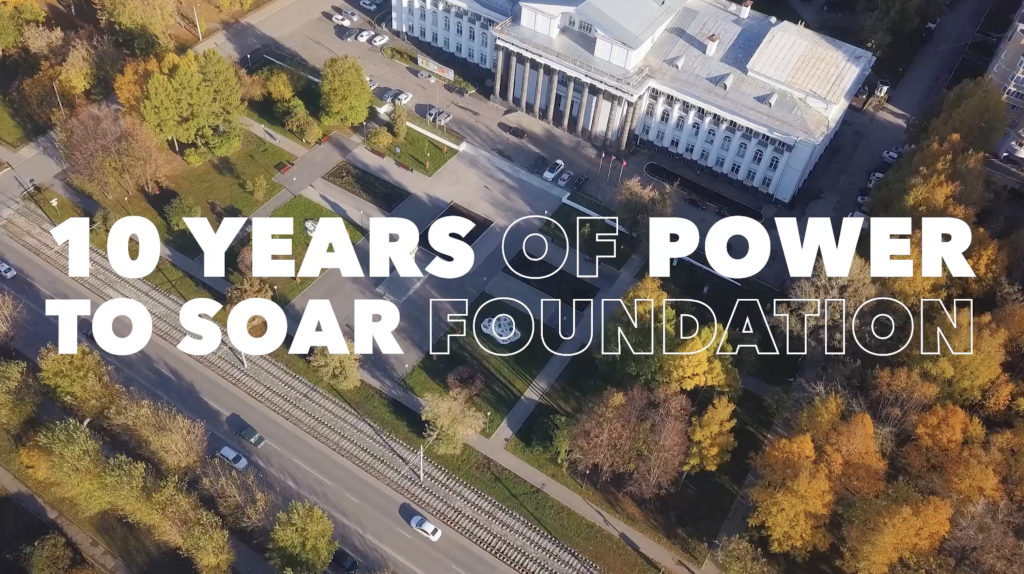Residential foster care provides a structured, supportive environment for children who cannot live with their biological families. Unlike traditional foster care, it involves group settings with trained staff offering round-the-clock care. These homes focus on helping children overcome social, emotional, and behavioral challenges, often stemming from abuse, neglect, or instability.
This article explores the key differences between residential foster care and foster family placements, highlighting the unique benefits and structure of residential programs. Readers will learn how these programs create stability, foster healthy relationships, and provide individualized support to help children thrive.
Key Takeaways
- Residential foster care provides a safe, structured environment for children who cannot live with their biological families, addressing their social, emotional, and behavioral needs.
- Unlike traditional foster care, residential programs operate in group settings with trained staff offering 24/7 care and support.
- These facilities focus on creating stability, fostering healthy relationships, and providing individualized treatment plans tailored to each child’s challenges.
- Residential care serves as an essential resource for children facing urgent needs, such as abuse or neglect, offering immediate protection and therapeutic support.
- Key components include a family-style environment, educational resources, recreational activities, and comprehensive medical and emotional care.
- Despite challenges like emotional and behavioral difficulties, residential foster care helps children heal, develop, and prepare for family placements or independent living through trauma-informed care and life skills programs.
Table of Contents
What Is Residential Foster Care?
Residential foster care provides a safe, structured environment for children who cannot live with their biological families. It operates within group homes or dedicated care units, with professional staff ensuring round-the-clock support. These facilities aim to meet both the immediate and long-term needs of children by offering stability, individualized care, and emotional support.
Each residential unit is designed to feel like a home, with communal spaces such as kitchens, living rooms, and laundry areas, where children can interact and build bonds. Unlike traditional foster care, residential settings accommodate multiple children at once, creating opportunities to form peer relationships within a supportive community. The environment prioritizes security, consistency, and routine, which are essential for children who have experienced instability.

Highly trained staff work in shifts, offering continuous supervision and care. These professionals address children’s social, emotional, and behavioral challenges while promoting personal growth. Many children in residential foster care participate in therapy sessions, both individually and with their siblings, to improve family dynamics and emotional well-being.
Rules and routines in residential settings provide much-needed structure. For example, set mealtimes, bedtimes, and daily activities help create predictability in the lives of children who often come from uncertain backgrounds. This structured approach reduces anxiety and fosters a sense of normalcy.
For children facing urgent needs, such as those impacted by abuse, neglect, or sudden emergencies, residential foster care can offer immediate protection and support. In some cases, it serves as a temporary placement due to a lack of available foster families. Whatever the reason for placement, these homes focus on helping children heal, develop, and reach their potential within a caring environment.
Reasons for Placing a Child in Residential Foster Care
Residential foster care provides a supportive and structured environment for children facing significant challenges. Placement in these facilities depends on each child’s unique circumstances, ensuring their safety and development remain the primary focus.
Emergency Situations
Sometimes, children find themselves in urgent situations where immediate care is necessary. Events like the sudden death or severe illness of a parent can leave a child without adequate care at home. In such cases, residential care offers safety and stability while long-term solutions are determined.
Exposure to violence or abuse is another reason for emergency placement. Children at risk of harm require immediate intervention, and residential care ensures they’re in a safe, supervised setting. Natural disasters or crises like fires can also disrupt living arrangements, prompting urgent placement. A lack of available emergency foster carers may sometimes make residential care the best option during these critical moments.
Planned Placement
In other situations, residential care is part of a child’s long-term care plan. Behavioral issues or delinquency that foster families find difficult to manage may lead to such placements. Facilities with trained staff and specialized programs help children address emotional and behavioral challenges, offering them the support they need.
Children removed from unsafe homes due to abuse or neglect often need residential placements. These settings provide not only immediate protection but also therapeutic resources to help them recover.
Some placements aim to reduce risks like sexual exploitation or running away. For children vulnerable to criminal exploitation, residential care offers a controlled environment where their safety is prioritized. Family breakdowns or the inability of foster carers to meet a child’s complex needs can also lead to planned placements. Care facilities with tailored services are better equipped to address these demands, ensuring children receive the attention essential for growth.
Key Components of Residential Foster Care
Residential foster care combines structure, support, and therapeutic intervention within community-based environments. It provides essential care for children unable to remain with their biological families while addressing emotional and developmental needs.
Family-Style Environment and Positive Influences
Creating a home-like atmosphere is central to residential foster care, especially in family-style group settings. Children live in small, family-oriented homes with live-in caregivers who foster positive relationships. This supportive environment allows children to experience stability, form meaningful connections, and learn healthy social behaviors. Smaller group settings bridge the gap between traditional foster homes and larger care units, offering a balance of security and community interaction.
Individualized Treatment Plans
Each child benefits from tailored treatment plans designed to meet their unique needs. Licensed clinicians assess the child’s medical, behavioral, and emotional challenges before setting measurable goals. These plans outline specific strategies and interventions while tracking progress over time. For children with trauma histories, therapeutic foster care prioritizes healing through individual therapy sessions, sibling-focused family therapy, and practical goal-setting.
Education and Recreation
Education plays a pivotal role as many children enter residential care academically behind due to previous instability. On-campus tutoring programs and structured routines help children catch up to grade level and rebuild their confidence in learning. Recreational activities create a balanced lifestyle, offering outdoor play, creative arts, or group sports. These activities promote teamwork, self-expression, and physical well-being, enhancing the children’s overall experience.
Medical and Emotional Support
Comprehensive medical and emotional care is available to address immediate and long-term needs. Whether through routine healthcare visits or trauma-informed counseling, these interventions ensure children feel safe and supported. Emotional guidance, including voluntary spiritual participation, helps foster growth and resilience. Staff members, trained in complex trauma responses, provide round-the-clock support, ensuring children always have someone to turn to during difficult times.
Challenges and Outcomes of Residential Foster Care
Residential foster care provides essential support for children who have faced abandonment, neglect, or abuse. Even though its benefits, challenges remain that significantly influence the emotional and developmental trajectory of these children.
Behavioral and Emotional Impact
Children in residential foster care often encounter heightened emotional and behavioral difficulties. Research highlights increased levels of anxiety, depression, and conduct disorders among children in these settings. Internalizing issues such as self-isolation and externalizing behaviors like aggression are common. For example, findings from the National Survey of Child and Adolescent Well-Being indicate that nearly 50% of children in out-of-home care settings display notable emotional or behavioral challenges.
Caregivers’ consistent presence can reduce these problems, but disruptions such as frequent staff changes or peer conflict in group care often exacerbate instability. The absence of stable and nurturing relationships limits their ability to form secure attachments, influencing self-esteem and social behavior. Also, neurodevelopmental impacts are evident, with affected regions of the brain, such as the prefrontal cortex, linked to decision-making and executive functioning. This developmental lag underscores the necessity of trauma-informed care.
Transitioning to Family Foster Care or Independence
When moving from residential foster care to a family setting or independent living, children face significant hurdles. A structured approach emphasizing consistent communication and trust-building facilitates smoother transitions. Children benefit from maintaining connections with familiar individuals, such as caregivers or peers, which prevents feelings of isolation.
Support systems make an enormous difference. For youth aging out of the system, programs teaching essential life skills like budgeting, cooking, and time management help bridge the gap to independence. Ensuring access to mental health services also provides emotional stability during such shifts. Foster families and staff working collaboratively set realistic goals and expectations, helping children adjust without feeling overwhelmed.
Through tailored support and understanding, residential foster care prepares children for a hopeful future, even amidst challenges.
Supporting Children in Residential Foster Care
Residential foster care supports children who face challenges living in family-based placements. These environments focus on safety, emotional growth, and individualized care to help children overcome their experiences of trauma and instability.
Role of Caregivers and Staff
Caregivers and staff in residential foster care play a vital role in shaping the children’s environment and meeting their needs. Professional staff manage daily care, ensuring the well-being and safety of every child in their care. They use evidence-based therapeutic methods to address emotional, social, and behavioral challenges common among children who have experienced abuse, neglect, or abandonment.
Highly trained staff provide both structure and nurturing support. Training often includes verbal de-escalation skills, which help manage crisis situations and minimize the need for physical interventions. For example, caregivers learn to recognize signs of emotional distress and use calming techniques to encourage open communication. These skills ensure that children feel supported, even during difficult moments.
Creating a stable and predictable environment is also part of their responsibilities. Through consistent routines and structured activities, staff foster a sense of security. This approach helps children regain trust and develop healthier emotional regulation over time. But, these professionals also recognize the importance of flexibility, adapting routines to suit the individual needs of each child.
Community and Family Integration
Encouraging community and family connections forms an essential part of residential foster care. While some children cannot thrive in traditional family placements, maintaining ties to siblings or relatives is often beneficial. Residential programs may offer family therapy sessions, providing opportunities for children to rebuild and strengthen these bonds in a guided, supportive setting.
Community involvement helps children develop social skills and gain a sense of belonging. Activities like team sports, art programs, and school participation enable them to interact with peers and form friendships. For instance, on-campus tutoring can help children catch up academically, rebuilding confidence while supporting future success.
Where possible, caregivers support gradual reintegration into family environments. For children transitioning to a foster home or reunification with biological relatives, programs offer tailored resources and training to ensure smoother adjustments. By preparing both children and caregivers, these efforts increase the likelihood of successful placements.
Residential foster care prioritizes the well-being of each child while fostering their ability to build relationships within and beyond the care setting.






